Napoleon’s armies overran Germany….”but not only did we seek something of consolation in the past, our hope, naturally, was that this course of ours should contribute somewhat to the return of a better day.” While “foreign persons, foreign manners, and a foreign, loudly spoken language” promenaded the thoroughfares, “and poor people staggered along the streets, being led away to death,” the brothers stuck to their work tables, to resurrect the present through the past.
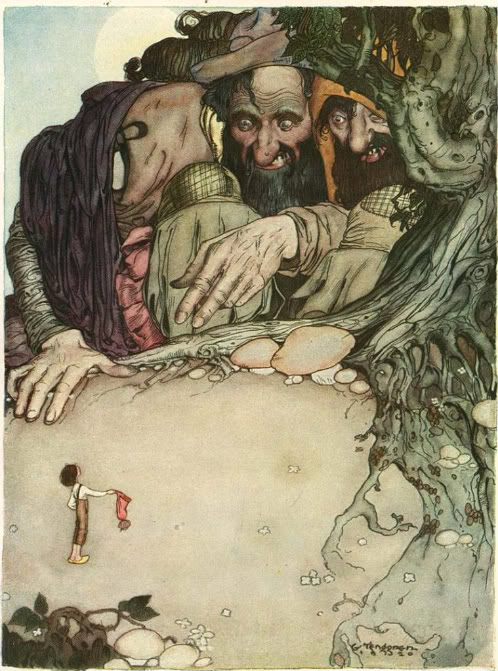
Gustaf Tengren."The Grimm brothers regarded European folklore as the detritus of Old Germanic belief: the myths of ancient time had disintegrated, first into heroic legend and romance, last into these charming treasures of the nursery. But in 1859, the year of Wilhelm's death, a Sanskrit scholar, Theodor Benfey, demonstrated that a great portion of the lore of Europe had come, through Arabic, Hebrew and Latin translations, directly from India--and this as late as the thirteenth century A.D."
The first volumes were much criticized because, although they were called “Children’s Tales”, they were not regarded as suitable for children, both for the scholarly information included and the subject matter. Many changes through the editions – such as turning the wicked mother of the first edition in Snow White and Hansel and Gretel to a stepmother, were probably made with an eye to such suitability. They removed sexual references, such as Rapunzel’s innocently asking why her dress was getting tight around her belly, and thus naively revealing her pregnancy and the prince’s visits to her step mother, but, in many respects, violence, particularly when punishing villains, was increased.
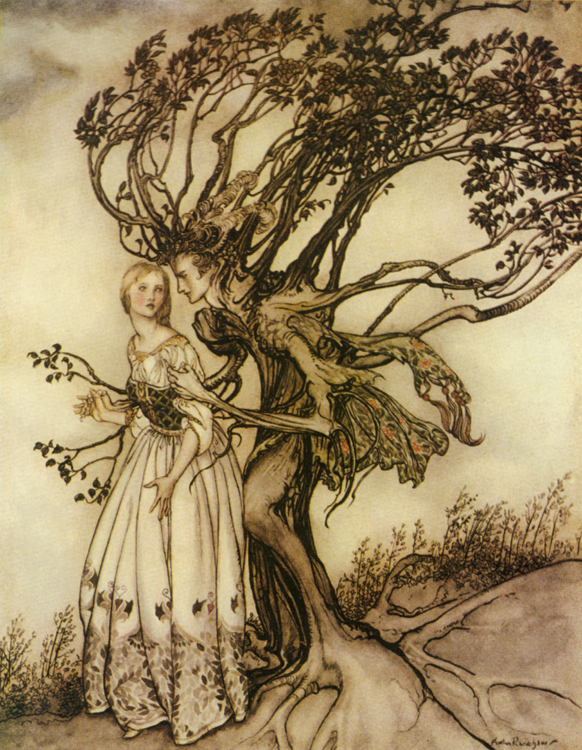
"According to Zipes, the Grimm brothers reacted to their father's death on a global level: in the desire to preserve their family line, they undertook the rather massive task of preserving German folklore: Put more positively, the Grimms saw old German literature as the repository of valid truths concerning German culture. In particular, they believed that a philological understanding of old German literature would enable Germans to grasp the connections between the customs, laws, and beliefs of the German people and their origins. (Zipes 209) By comparing the motifs and themes in German tales and legends with those of other countries, the Grimm brothers attempted to preserve German culture."
“Foremost among those asking tough questions were feminists, progressive pedagogues, and sociopolitical critics, whose resistance to the stories was fueled by revelations that the Grimms had reshaped tales to suit their own nineteenth-century middle-class values.This reevaluation and the surge of fairy-tale studies over the last forty years have definitely altered the reception of Grimms’ tales. Writers, filmmakers, and creative artists in every medium have produced countless new fairy tales and adaptations.” …
In 1803, the Grimms met the Romantics Clemens Brentano and Ludwig Achim von Arnim at the University of Marburg. These two men stirred in the brothers an interest in ancient fairy tales. In Kassel they started to collect and write down tales that they alleged had been handed down for generations. Among their sources were Dorothea Viehmann, and two Huguenot families, Hassenpflug and Wild, who introduced them to several tales of French origin. The most important sources were the works of the Italian fairy tale writers Giovanni Francesco Straparola and Giambattista Basile, on which most the fairy tales were based. The Brothers Grimm praised Giambattista Basile as the first writer to have collected fairy tales into a book only for fairy tales.
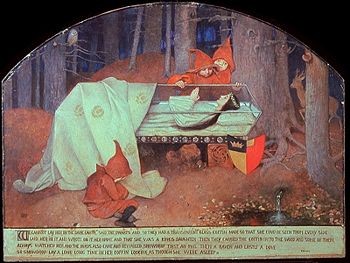
Joseph Campbell:The first effect of the work was a transformation throughout the world of the scholarly attitude toward the productions of the folk. A new humility before the informant becomes everywhere perceptible after the date, 1812. Exactitude, not beautification, becomes thereafter the first requirement, "touching up" the unforgivable sin. Furthermore, the number and competence of the collectors greatly and rapidly increased. Field-workers armed with pad and pencil marched forth to every corner of the earth.
Thus the two friends who compiled volumes of early German folk songs- Clemens Brentano and Ludwig Achim von Arnim- were not content merely to transcribe. The primitive was fascinating, but it must not be too primitive. Anybody who knows the symphonies and song cycles of Gustav Mahler will know that “Der Knaben Wunderhorn” -the name that Brentano and Von Arnim gave to their compilation- has a kind of false simplicity about it. Mahler drew again and again on the songs sounded by the boy’s wonderhorn, but he was not going back to the beginnings of German poetry, only to a sophisticated editing of it. The old ballads and folk songs were mere raw material- irregular, simple, shocking- to be worked up by cultivated artists.
But the Grimm brothers were not artists. They were scholars, and they were after truth, not beauty. They loved the old language, and they would not harm a hair of its head; they were after folk, not folksiness. This is not to say that they had nothing of the aesthete in them. They enjoyed the stories they collected, and they delighted in giving shape to them and imposing economy. It seems that Wilhelm’s gift for doing this was greater than Jacob’s. Jacob was something of a plodder, happier with the hard work of philology- grammars and dictionaries and laws of sound change- than with the dangerous exercise of the imagination. Six months after Wlhelm’s death, Jacob summed up the difference between them pretty succinctly: Wilhelm he said, had a vein of silver in him, while he, Jacob, was pure iron.
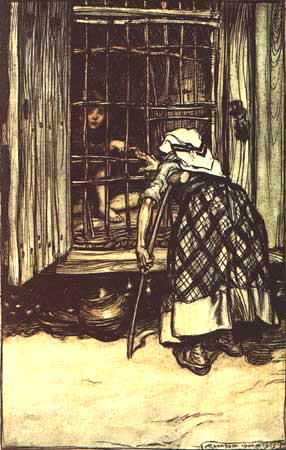
Campbell:Volume one came out at Christmas time, with a dedication to Bettina, the wife of Achim von Arnim, for her little son, Johannes Freimund. In Vienna the book was banned as a work of superstition; but elsewhere, in spite of the political tension of the times, it was eagerly received. Clemens Brentano declared that he found the unimproved materials slovenly and often very boring; others complained of the impropriety of certain of the tales; newspaper reviews were few and cold. Nevertheless, the book enjoyed immediate success, and prospered. The Brothers Grimm had produced, in an unpre
ed way, the masterpiece which the whole Romantic movement in Germany had been intending.…The special distinction of the work of Jacob and Wilhelm Grimm (1785-1863 and 1786-1859) was its scholarly regard for the sources. Earlier collectors had felt free to manipulate folk materials; the Grimms were concerned to let the speech of the people break directly into print. Among the Romantics of the generation just preceding, folk poetry had been venerated profoundly. Novalis had pronounced the folk tale, the primary and highest poetical creation of man. Schiller had written extravagantly:
Tiefere Bedeutung
Liegt in dem Marchen meiner Kinderjahre
Als in der Wahrheit, die das Leben lehrt.
Sir Walter Scott had collected and studied the balladry of the Scottish border. Wordsworth had sung of the Reaper. Yet no one before the Grimms had really acquiesced to the irregularities, the boorishness, the simplicity, of the folk talk. Anthologists had arranged, restored, and tempered; poets had built new masterpieces out of the rich raw material. But an essentially ethnographical approach, no one had so much as conceived….
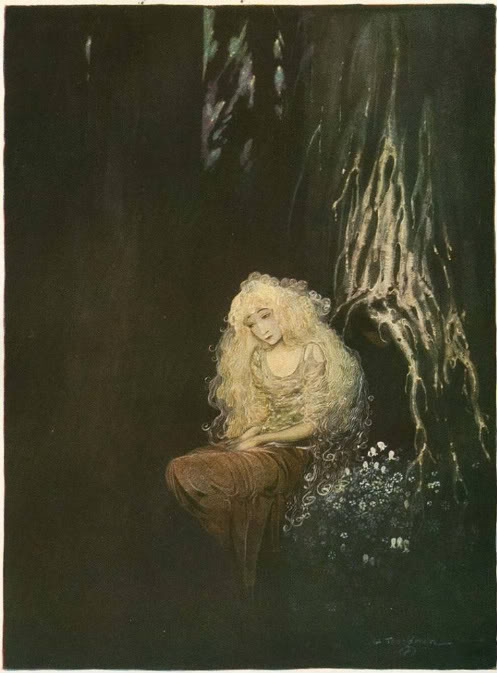
"So that by that time the Grimm brothers arrived to began their collection, much material had overlain the remote mythology of the early tribes. Tales from thee four quarters, inventions from every level of society and all stages of Western history were commingled. Nevertheless, as they observed, a homogeneity of style and character pervades the total inheritance. A continuous process of re-creation, a kind of spiritual metabolism, has so broken the original structures in assimilating them to the living civilization, that only the most meticulous and skillful observation, analysis and comparative research can discover their provenience and earlier state."
He had an iron constitution as well as an iron devotion to work. Jacob was never ill, while Wilhelm was never really well; during the years of the collection of the tales he suffered from a severe heart disorder that kept him in bed for days at a time. There was about Wilhelm the kind of wistfulness that sometimes goes with chronic ill-health. He was gay, but gently so; he liked children and music. Jacob remained a bachelor, but Wilhelm married a girl named Dorthchen Wild, one of six sisters who had, among their other attractions, a large fund of inherited folk-tales. Marriage did not interfere with the brothers inseparability: Uncle jacob lived in Wilhelm’s house, though one presumes he now had a bedchamber of his own, and, says Richard Cleasby, the Icelandic scholar, “one might almost imagine the children were common property.”
Happy days then, and plenty of hard study, but we would be wrong to think of a couple of sull and cloistered lives. In the postgraduate days in Kassel, while the foundations of the huge folk edifice were being laid, Napoleon was shouting his way through Europe. In 1806, the armies overran Kassel itself. The brothers tried to drown their spiritual depression in Old German, but the library was no mere escape. They felt that their conservation of the German past might somehow contribute to a new romanticized version of the past. In a sense they were helping to forge a German national consciousness. If Martin Luther gave the German Bible, the brothers Grimm went deeper and gave it a dictionary and a grammar. And, of course, they drew its myths out of the darkness of the past. …
ADDENDUM:
“The influence of these books was widespread. W. H. Auden praised it, during World War II, as one of the founding works of Western culture. The tales themselves have been put to many uses. The Nazis praised them as folkish tales showing children with sound racial instincts seeking racially pure marriage partners, and so strongly that the Allied forces warned against them; for instance, Cinderella with the heroine as racially pure, the stepmother as an alien, and the prince with an unspoiled instinct being able to distinguish.Writers about the Holocaust have combined the tales with their memoirs, as Jane Yolen in her Briar Rose. The work of the Brothers Grimm influenced other collectors, both inspiring them to collect tales and leading them to similarly believe, in a spirit of romantic nationalism, that the fairy tales of a country were particularly representative of it, to the neglect of cross-cultural influence. Among those influenced were the Russian Alexander Afanasyev, the Norwegians Peter Christen Asbjørnsen and Jørgen Moe, the English Joseph Jacobs, and Jeremiah Curtin, an American who collected Irish tales.


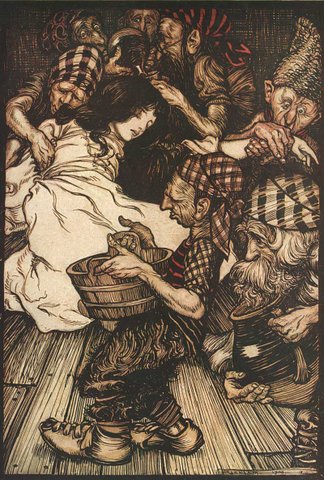



 COMMENTS
COMMENTS